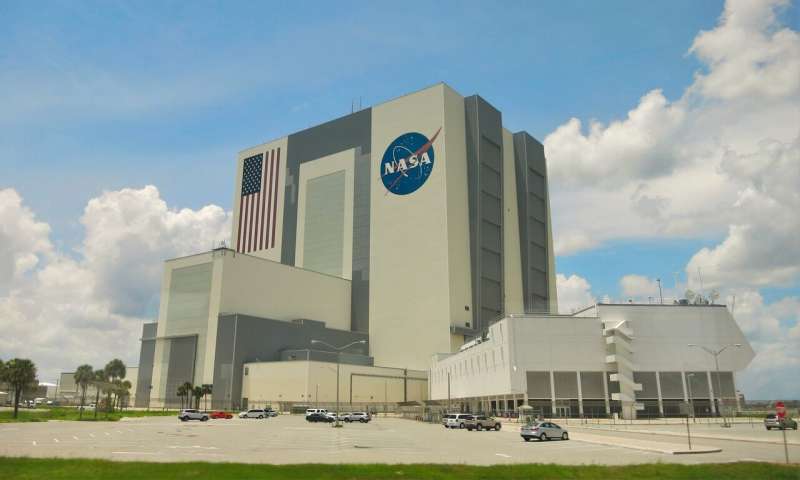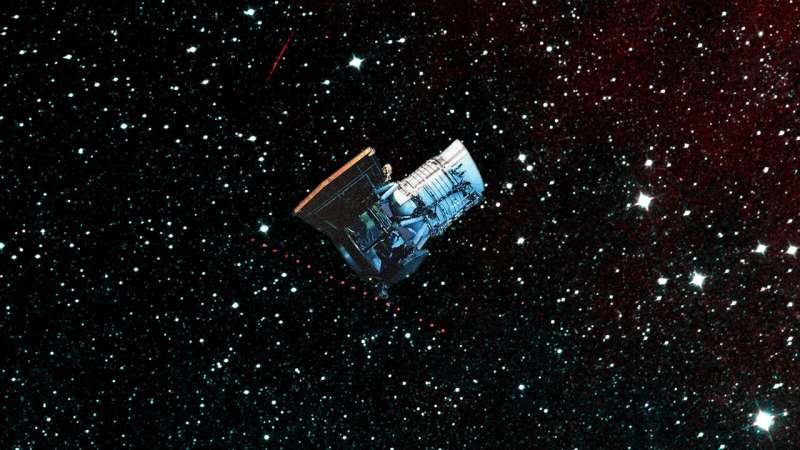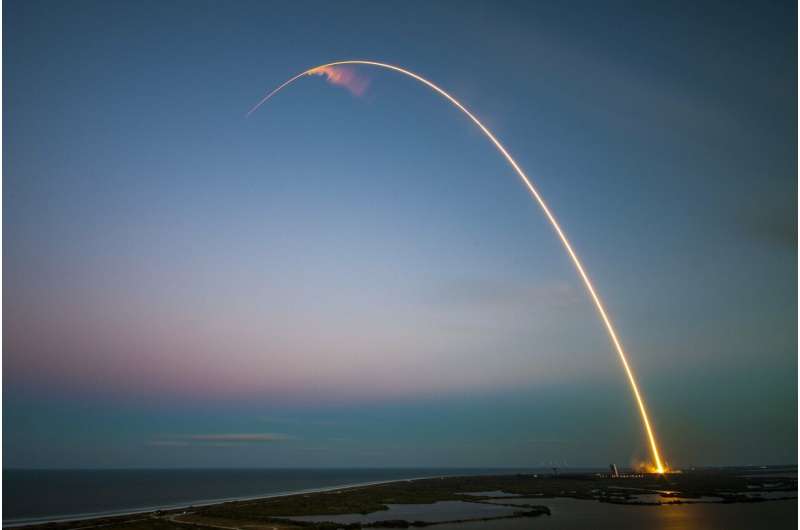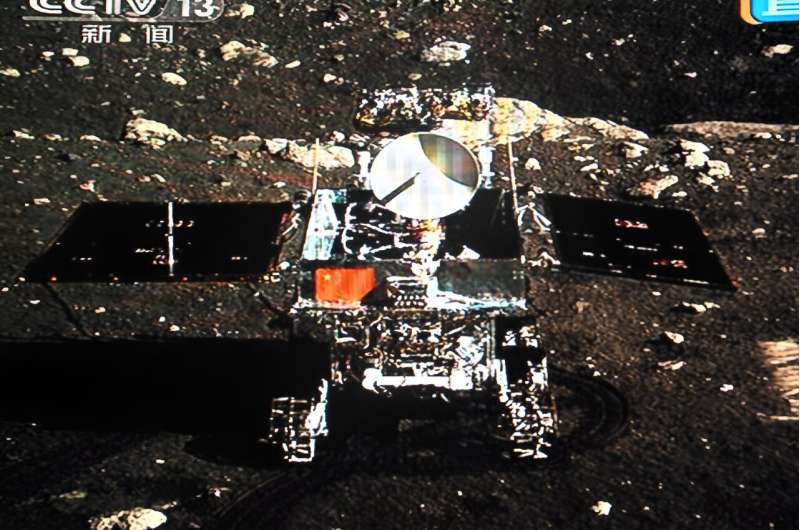
Copernical Team
SpaceX Falcon Heavy launch on hold for now, weather delays Falcon 9 attempt too

SpaceX is standing down from attempting to launch its powerhouse Falcon Heavy for now citing the need for "systems checkouts" while weather would have been an issue the next couple of days, and has already delayed a Falcon 9 launch as well.
After already delaying a Sunday attempt to launch Falcon Heavy from Kennedy Space Center's Launch Pad 39-A because of weather and then scrubbing a Monday night attempt less than an hour before its planned liftoff because of a "ground side issue," SpaceX had announced it would try again Wednesday.
But late Tuesday, it called off those plans.
"We are standing down from tomorrow's Falcon Heavy launch of USSF-52 to perform additional system checkouts," the company posted to X. "The payload remains healthy while teams work toward the next best launch opportunity. We're also keeping an eye on the weather and will announce a new launch date once confirmed with the Range."
USSF-52 is a mission to send up the Space Force's secretive mini shuttle, the X-37B Orbital Test Vehicle built by Boeing, on what would be the spacecraft's seventh trip to orbit.
NASA's NEOWISE celebrates 10 years, plans end of mission

The asteroid and comet-hunting infrared space telescope has gathered an impressive haul of observations, but it's now at the mercy of the sun, which is accelerating its demise.
NASA's NEOWISE has had a busy decade.
US launch of new Vulcan Centaur rocket delayed until January

The maiden liftoff of a new American rocket called Vulcan Centaur has been delayed from Christmas Eve to January 8, United Launch Alliance, the company developing it, said Thursday.
The postponement stems from last-minute technical snags but ULA's CEO Tory Bruno said on X, formerly Twitter, that a recent dress rehearsal on the launch pad went well.
The rocket will be carrying a private lunar lander, developed by the startup Astrobotic, which could become the first such private craft to touch down on the moon and the first American robot to land on the surface since the Apollo program ended in 1972.
"This is sort of, in a way, the first giant step in the campaign for the US, and for all of our friends, to go back to the moon, eventually with people," Bruno told AFP in an interview last week.
"It's a pretty big deal to have a payload at all, let alone one that goes to the surface of the moon," he added.
"We wanted to do something really important and we have a lot of confidence, obviously, in the design of our rocket," Bruno said.
ESA forges ahead with Destination Earth

The second phase of the European Union’s Destination Earth initiative has been approved at ESA Council. Destination Earth, also known as DestinE, will build digital models of Earth allowing greater insight into weather and climate dynamics and their impacts on society.
Media information session from ESA’s 322nd Council in Paris
 Video:
00:45:51
Video:
00:45:51
ESA Director General Josef Aschbacher and Swiss ESA Council Chair Renato Krpoun give an update on the roll-out of decisions taken at the Space Summit in Seville, including the implications for space transportation and progress towards enabling a European commercial provider to deliver supplies to the International Space Station by 2028 and return cargo to Earth. The evolution of the European Spaceport in Kourou is also covered.
Furthermore, the briefing addresses upcoming, high-level political meetings on space and international cooperation projects that ESA runs with partners around the globe, as well as ESA’s contribution to Poland’s Earth observation
China's space program: Five things to know

When Chang'e-3 became the first Chinese craft to land on the moon 10 years ago, it kicked off nationwide celebrations—and a decade of major successes for a rapidly accelerating space program.
Since the December 14, 2013 landing, China has built a crewed space station, sent a robotic rover to Mars and become the first nation to make a controlled landing on the far side of the moon.
President Xi Jinping has described building China into a space power as "our eternal dream".
Here are five things to know about this space program:
A slow start
Chinese leader Mao Zedong declared his nation's space ambitions soon after the Soviet Union launched the world's first satellite, Sputnik 1, in 1957.
It took 13 years for China to launch its first satellite Dong Fang Hong, or "The East is Red"—named after the famous Communist revolutionary song it broadcast from orbit.
EUCOM, AFRICOM, Space Force activate new service component command
 U.S. European Command, U.S. Africa Command and U.S. Space Force officially activated the U.S. Space Forces Europe and Africa component command at a ceremony in Ramstein, Germany, Dec. 8, 2023.
USSPACEFOR-EURAF is the newest service component under EUCOM and AFRICOM with their permanent headquarters at Ramstein Air Base. EUCOM and AFRICOM are the latest combatant commands to establish a spa
U.S. European Command, U.S. Africa Command and U.S. Space Force officially activated the U.S. Space Forces Europe and Africa component command at a ceremony in Ramstein, Germany, Dec. 8, 2023.
USSPACEFOR-EURAF is the newest service component under EUCOM and AFRICOM with their permanent headquarters at Ramstein Air Base. EUCOM and AFRICOM are the latest combatant commands to establish a spa Hydrosat Secures Contract with NRO for Thermal Imagery Evaluation
 Hydrosat, a leader in thermal infrared data and analytics, has announced a significant advancement in its operations. The company has been awarded a 2.5-year contract by the National Reconnaissance Office (NRO), under the Strategic Commercial Enhancements (SCE) Broad Agency Announcement (BAA) Commercial Electro-Optical Capabilities (CEC) Focus Area. This contract represents a key collaboration b
Hydrosat, a leader in thermal infrared data and analytics, has announced a significant advancement in its operations. The company has been awarded a 2.5-year contract by the National Reconnaissance Office (NRO), under the Strategic Commercial Enhancements (SCE) Broad Agency Announcement (BAA) Commercial Electro-Optical Capabilities (CEC) Focus Area. This contract represents a key collaboration b Northrop Grumman tests enhanced GMD system in missile defense demonstration
 Northrop Grumman Corporation (NYSE: NOC), a key player in defense technology, has recently supported a crucial test of the Ground-Based Midcourse Defense (GMD) system, conducted by the Missile Defense Agency (MDA). This test, known as FTG-12, showcased the capabilities of a stage selectable Ground-Based Interceptor (GBI) missile system, which engaged with an air-launched Intermediate Range Balli
Northrop Grumman Corporation (NYSE: NOC), a key player in defense technology, has recently supported a crucial test of the Ground-Based Midcourse Defense (GMD) system, conducted by the Missile Defense Agency (MDA). This test, known as FTG-12, showcased the capabilities of a stage selectable Ground-Based Interceptor (GBI) missile system, which engaged with an air-launched Intermediate Range Balli Spire Global secures major EUMETSAT contract for satellite weather data
 Spire Global, Inc. (NYSE: SPIR), a leader in space-powered data and analytics, has been awarded a significant contract by EUMETSAT, the European meteorological satellite agency. This multi-million euro deal, spanning an initial period of two years from 2024 to 2026 with potential extensions, marks a significant step in advancing weather forecasting capabilities.
The contract, which include
Spire Global, Inc. (NYSE: SPIR), a leader in space-powered data and analytics, has been awarded a significant contract by EUMETSAT, the European meteorological satellite agency. This multi-million euro deal, spanning an initial period of two years from 2024 to 2026 with potential extensions, marks a significant step in advancing weather forecasting capabilities.
The contract, which include 
































